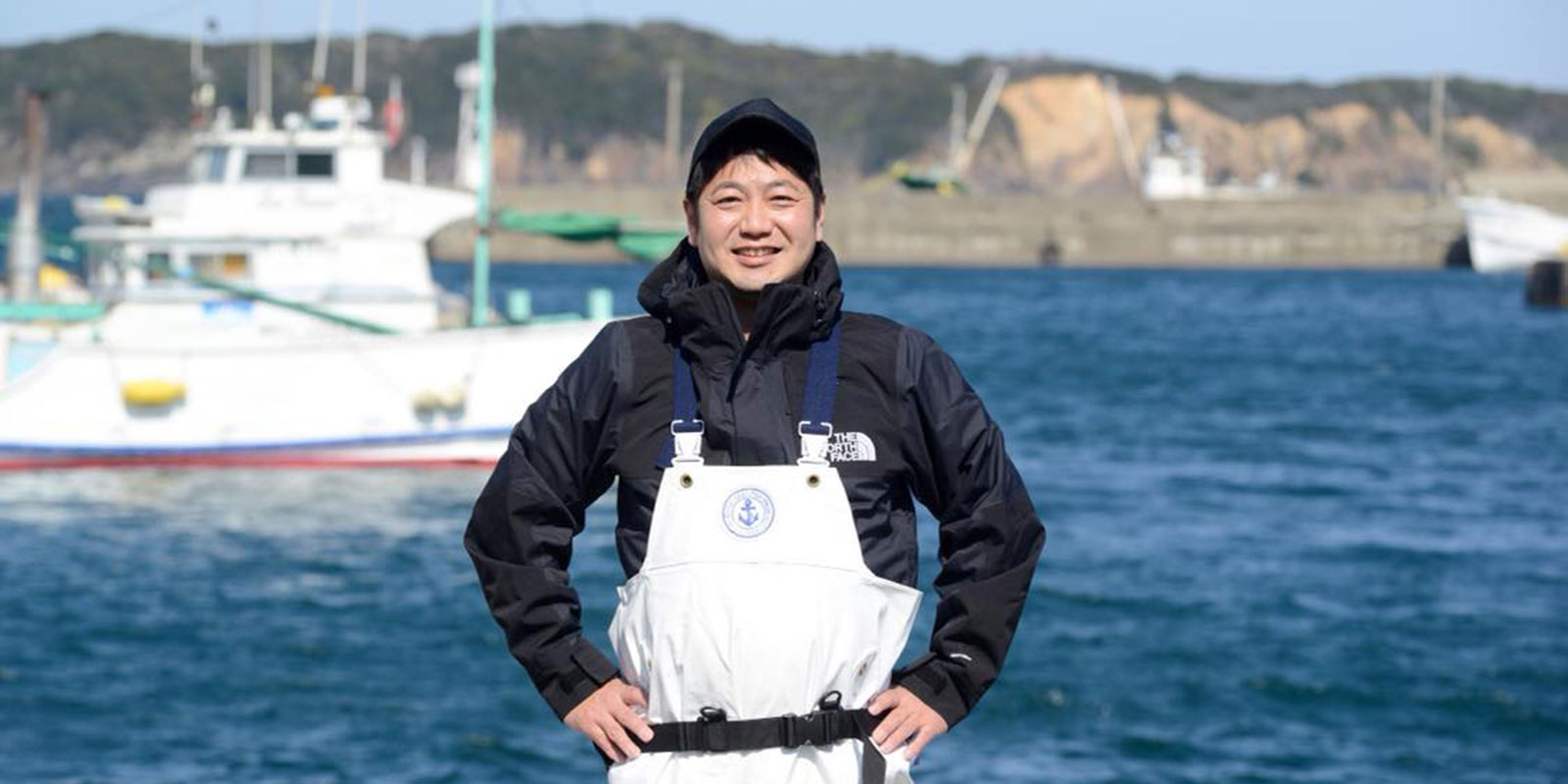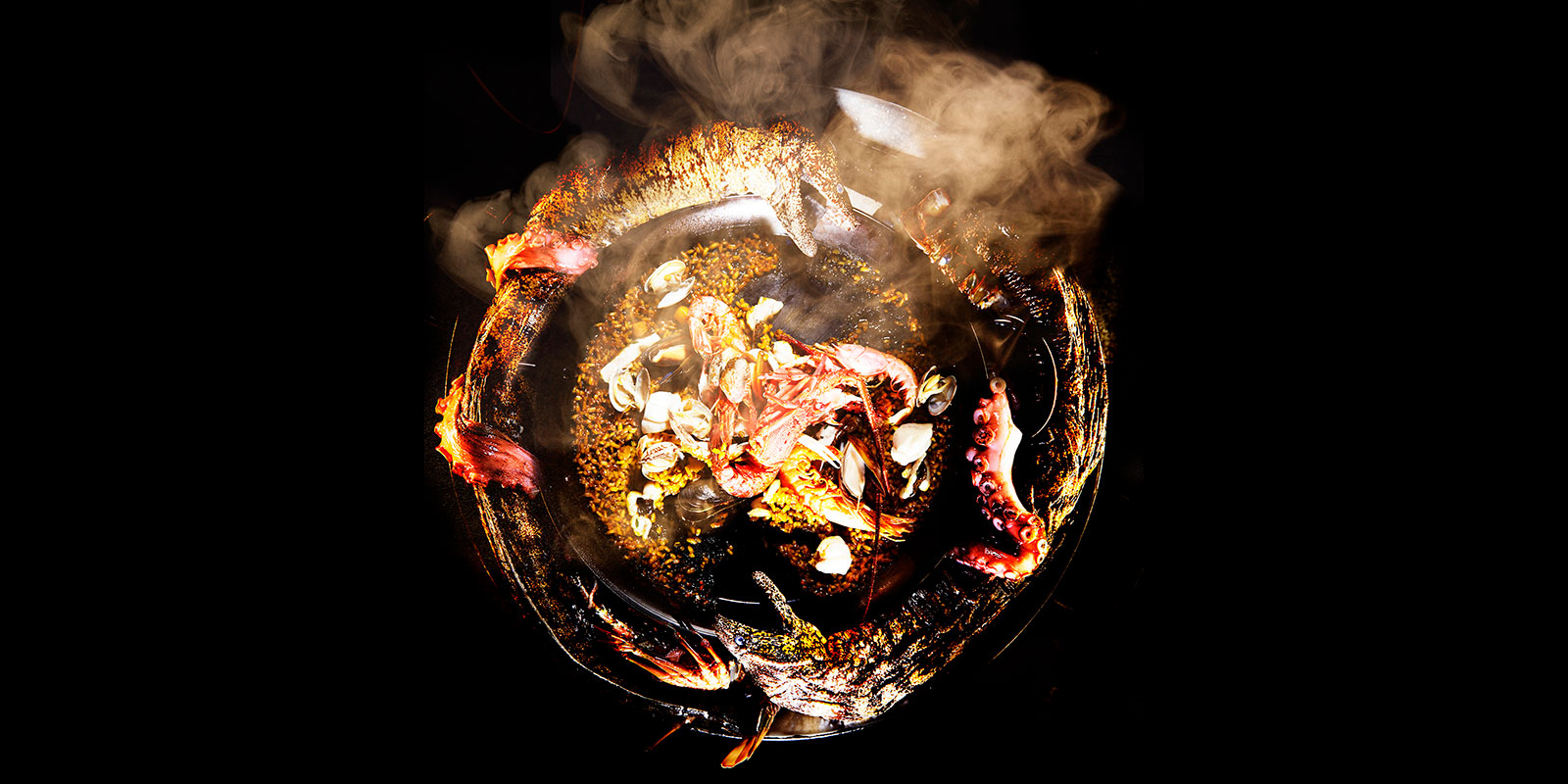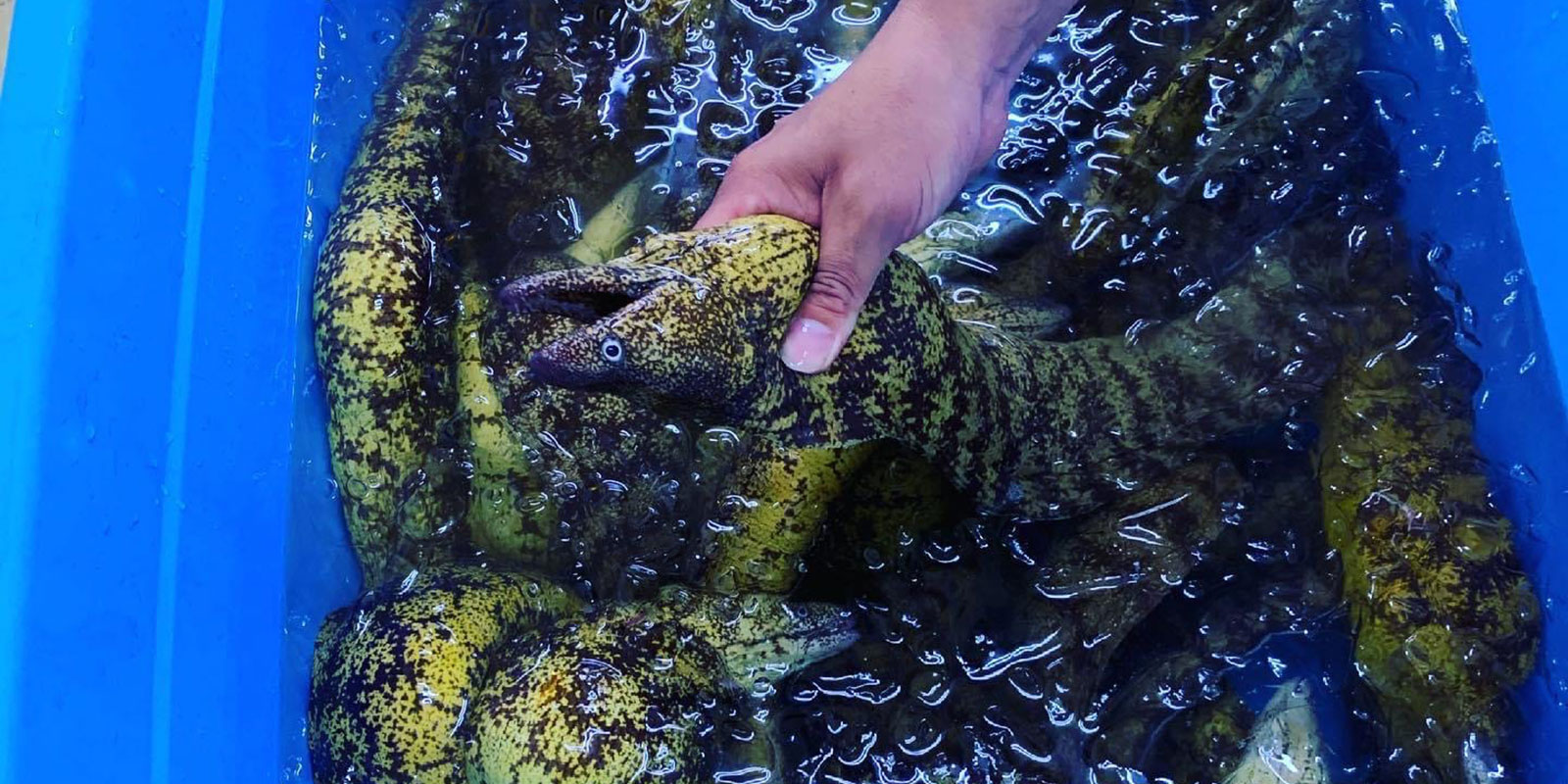A balanced diet
What we eat can have a huge impact on the environment. Akiko Toya meets Takamasa Ishikawa, a fisherman with plans to change the tastes of the country—and maybe save a species in the process
Takamasa Ishikawa, a fisherman in Japan’s Ise-Shima region in the eastern part of Mie Prefecture, is seeing first-hand the impacts of climate change. Working with the local Aquaculture Research Institute (ARI), in recent years he has tracked the rising temperature of the waters he fishes off the coast. The results are startling. According to ARI data between January 2020 and January 2023, the average seawater temperature in the region rose by approximately three degrees centigrade and these warming waters could be devastating for the creatures that call them home.
Japanese spiny lobsters, known locally as Ise lobsters, are one of the popular marine delicacies for which Ise-Shima is famous. Underwater, the Ise lobsters have established a triangular symbiotic relationship with octopuses and moray eels. Moray eels prey on octopuses, and octopuses are fond of the Ise lobsters, but this delicate balance is now under threat. The recent rise in sea water temperatures has resulted in an increase in the number of moray eels and a dramatic decrease in the octopus population, resulting in moray eels feeding on lobsters to survive. “Three to four years ago, I began to hear stories, where ama (female divers who collect shells and seaweed) had their hands bitten by moray eels while collecting abalones in the rocky areas,” says Ishikawa. “I even heard of moray eels breaking through fishermen’s nets to eat the lobsters.”
“I heard of moray eels breaking through
fishermen’s nets to eat the lobsters”
 Takamasa Ishikawa
Takamasa Ishikawa
Sea change
Believing that diets will change, Ishikawa launched a project to capitalize on and combat the number of moray eels
Believing that human diets will change along with climate change, Ishikawa launched a project to capitalize on and combat the number of moray eels, by turning them into a local specialty to rival Ise lobsters. Tokyo-based filmmaker Keita Takayanagi, CEO and creative producer of Dotframe Inc., and photographer Hiroshi Ishikawa, joined the project. Together they plan to put moray eels on plates across Japan, while also educating consumers about both the joys of eels and the importance of making sustainable choices in what they eat if we are to bring balance back to the seas. “Let’s face these challenges with excitement,” says Takamasa.
Believing that diets will change, Ishikawa launched a project to capitalize on and combat the number of moray eels
Ishikawa was born in Ise-Shima, but in 2002, at the start of his career, he left for Tokyo where he developed frozen foods across Asia for a large company. After nine years away, he returned to his hometown to take over his father’s frozen food wholesale business. Back in Shima city he noticed the challenges facing Japan’s rural areas, particularly a stark decline in birthrates, an aging population, and a shift in industries. Believing his experiences at a major distributor could help the current local situation at his hometown, he decided to help the local fishing industry. In 2020 he expanded the family business by selling locally caught seafood and promoting Ise-Shima’s fishing industry and preserving their traditions.
 Xiringuito Escribà’s moray eel paella | ©2023 In-yo / Keita Takayanagi, Hiroshi Ishikawa. All Rights reserved
Xiringuito Escribà’s moray eel paella | ©2023 In-yo / Keita Takayanagi, Hiroshi Ishikawa. All Rights reserved
Takayanagi launched the “Eat to Know” project and encouraged the hospitality company Transit General Office to create a place in Tokyo where moray eel dishes can be tasted. Transit General Office is involved in the “Farmer ⇆ You” project, which encourages cities to address global environmental issues through food, and runs over 115 different restaurants across Japan. As moray eel is a familiar ingredient in iberian cuisine, Transit General Office decided that its Spanish brand Xiringuito Escribà—which has a restaurant in Shibuya, Tokyo, and a flagship store in Barcelona—would be the ideal home for a new eel-centric dish. The Xiringuito Escribà chefs didn’t disappoint, combining the moray with rice to create an extraordinary paella. “In my hometown, the only idea I had was to deep-fry moray eel,” enthuses Ishikawa. “In Tokyo, they [Xiringuito Escribà] made it tasty and stylish.” Even though moray eel is commonly eaten in Spain, it is not often found in paella there, but after introducing the dish at Tokyo’s Xiringuito Escribà, the company considers adding it to the menu in Barcelona, too.
“In my hometown, the only idea I had was to deep-fry moray eel. In Tokyo, Xiringuito Escribà made it tasty and stylish”
 The increase in the number of moray eels is endangering the Ise lobster population of Ise-Shima | Takamasa Ishikawa
The increase in the number of moray eels is endangering the Ise lobster population of Ise-Shima | Takamasa Ishikawa
Moray eels are similar to common eels, but they have a unique internal structure, with three bones from the head to the belly and five from the navel to the tail. According to employees at Xiringuito Escribà, when they’re filleting the fish, some bones inevitably remain—but they have plans to turn this into a positive: launching a campaign where if customers find a bone in their fish, they receive a free drink. They also hope to take advantage of the fact that moray eels contain the highest percentage of collagen, which is good for the elasticity of the skin, of any living organism.
Turning the tables
Ishikawa sees the popularization of moray eels as just the beginning in encouraging people to broaden their culinary horizons. Only around 80 kinds of fish are sold at Tokyo’s Toyosu Wholesale Fish Market, whereas Japanese fishermen will enjoy as many as 4,000 different types. Ishikawa says that he would like to continue to communicate about the joys of unsampled fish in the future and hopes to make them staples of plates across the city. He is also considering developing a fish-focused YouTube channel to spread the word about fish dishes that people just don’t know about. “If we continue to take only the fish that are currently sold at urban markets, marine life will be depleted,” he says. “We can start by eating fish that’s been unused so far. I want to be involved in the challenges facing the world.” And that change can start at your dinner table.